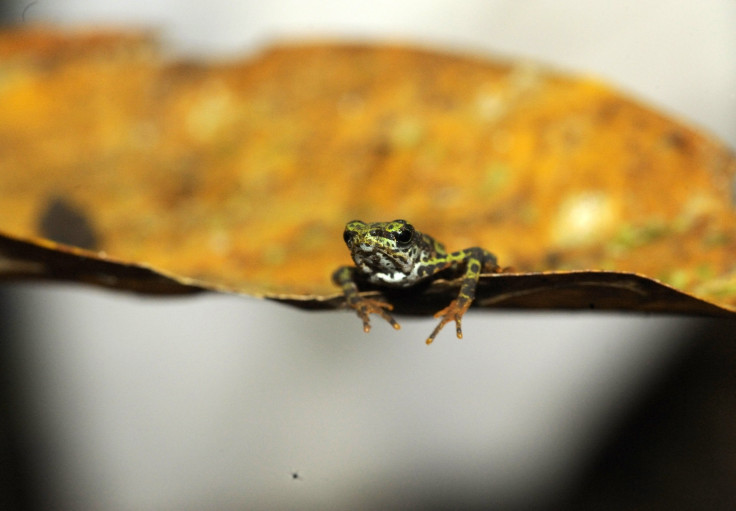Some Small, Earless Frogs Use Mouth As An Amplifier To Hear Sounds

Scientists have found that one of the world’s smallest frog species, previously thought to be deaf, can hear by using a body part, which is not usually known for the task -- the mouth.
According to researchers, the Gardiner's Seychelles frog, a one centimeter-long frog only found in the Seychelles Islands in the western Indian Ocean, was thought to be deaf as it does not have a middle ear, which is critical to most land animals for hearing sounds. And, because there are other frog species without middle ears that can hear and communicate with each other, scientists wanted to know whether Gardiner's Seychelles frogs could also manage to hear somehow.
“These small animals, Gardiner’s frogs, have been living isolated in the rainforest of the Seychelles for 47 to 65 million years, since these islands split away from the main continent,” Daily Mail quoted Renaud Boistel from the French National Centre for Scientific Research as saying. “If they can hear, their auditory system must be a survivor of life forms on the ancient supercontinent Gondwana.”
To solve the mystery, a team of researchers, led by Boistel, conducted a study by setting up loudspeakers in the frogs’ habitat in the rain forests of the Seychelles Islands and played recordings of frog calls. The researchers later observed that male Gardiner's Seychelles frogs came closer to the loudspeakers and responded to the noise, indicating that they could hear it.
To understand how the sound waves reached the tiny frogs’ brains, researchers performed an X-ray study of one of the frogs to find out that the species has a poorly developed pulmonary system, suggesting that it was not the lungs that helped them hear.
The later part of the experiments focused on the frogs’ heads, and from a number of 3D simulations of how sound could have travelled through their heads, scientists figured out that it is a combination of the frogs’ mouth chamber and thin tissue layers that enable them to hear by transmitting sounds to their inner ears.
According to the study, published in the Proceedings of the National Academy of Sciences on Monday, the bones in the frogs’ mouth act as an amplifier for sound waves and an evolutionary adaptation helped the sound travel from the mouth to the inner ear.
“It’s interesting because this was never found before,” Thierry Aubin, a bioacoustics expert at the Université Paris Sud in France, and the co-author of the study, said in a statement.
© Copyright IBTimes 2024. All rights reserved.






















